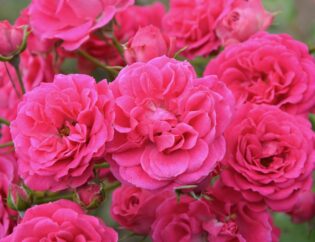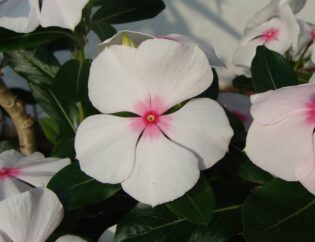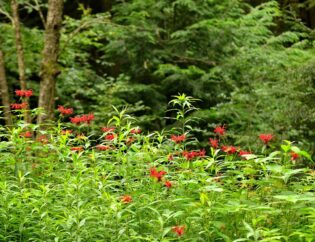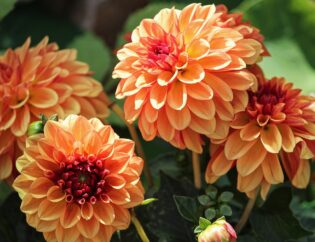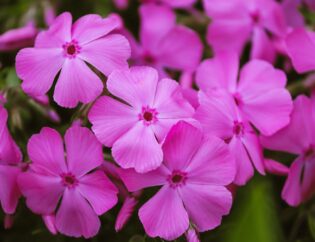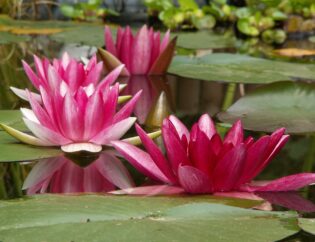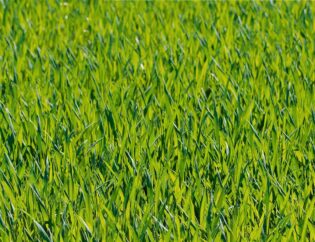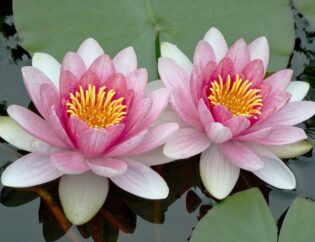
How many people love pulling weeds? Anybody? While gardening can be relaxing, the constant need for pulling weeds gets tedious fast. Fortunately, there are many ways to get the upper hand when it comes to keeping your yard free of weeds. Arguably the best one is to learn how to use landscape fabric (also called weed barrier) to prevent them from growing in the first place.
Read on to learn about how to use landscape fabric as well as its advantages and disadvantages.
What Is Landscape Fabric, Anyways?
Landscape fabric is a heavy-duty material designed to be placed in flower beds or under gravel or rock walkways. The material is either woven fibers or a solid piece that has been perforated to allow water to pass through. Higher quality brands typically offer UV protection to help the fabric last longer.
The fabric blocks sunlight from reaching seeds in the soil underneath. Thus, this prevents weeds — and anything else — from growing.
Why Use It?
Landscape fabric offers homeowners quite a few advantages, which is why many people love using it. These include:
- An environmentally friendly weed control option, using landscape fabric eliminates or drastically reduces the need for chemical weed killers
- Keeps ground cover materials like mulch, gravel, and stones from being pushed down into the soil
- Reduces evaporation of moisture from the soil
- Helps prevent erosion on sloped areas
Why Skip Using It?
Unfortunately, landscape fabric also comes with a list of disadvantages. These include:
- Doesn’t prevent all weeds as seeds can blow in on top of the fabric over time
- It discourages earthworms from burrowing in the soil, which could lead to less healthy soil
- High-quality heavy-duty landscape fabrics can get expensive
- For the same reason weeds can’t grow, plants can’t reseed on their own
- It will need to be changed eventually when it starts to break down, and pulling it out can be a pain
Basic Installation
Learning how to use landscape fabric is rather simple, and beginner gardeners can get the hang of it easily.
Begin by preparing the soil with fertilizer or other amendments to help maintain soil quality. Once the material is down, you won’t be able to till or dig much, so preparing the soil comes first. Lay the landscape fabric, paying close attention to which side is supposed to face down.
For fabrics with a fuzzy or felted side and a shiny side, install with felted side against the dirt. The felt is designed to cling to the dirt and percolate water better than the shiny side. For fabrics that are the same on both sides, it doesn’t matter which is up or down.
If using under a flower bed or around perennials, cut holes large enough for the plants and with some room for growth. For areas without plants, simply lay the fabric in rows. Always overlap pieces generously by 6-8 inches. This will prevent gaps from appearing over time and with foot traffic.
Secure the material in place with landscape pins every 8 -10 inches along the edges and every 12 inches in the center. To finish the installation, cover with an attractive gravel or mulch.
Using Landscape Fabric Under Rocks or Mulch-Simplest Application
Using landscape fabric under rocks or mulch is one of the best uses for the material. Because there are no plants involved, ongoing soil maintenance like amending with fertilizer isn’t a concern. Because the soil won’t be disturbed by gardening activities, it will last longer.
Be sure to choose a high-quality heavy-duty landscape fabric for this purpose so that it will last for several years. Gravel and rocks are heavy, so reinstalling later isn’t fun. Additionally, stones can be heavy and sharp so installation should be handled with care to prevent rips and tears.
Using Landscape Fabric Around Existing Plants
Learning how to use landscape fabric around existing plants is a little trickier. Good quality soil is important for the plants but the fabric barrier will be vulnerable to damage by gardening activities.
To lay the fabric around plants, cut a circular hole large enough for the plant. Leave enough room for it to grow. Fertilize the plant occasionally to ensure it is getting enough nutrients. To get the fertilizer to the roots, consider using a liquid fertilizer to water the plant.
Using Landscape Fabric in Annual and Vegetable Garden Beds
Using landscape fabric in annual and vegetable garden beds isn’t very practical. Unfortunately, it’s more of a permanent solution and the material will get torn up when replanting every year.
In place of landscape fabric, try spreading old newspapers, burlap sacks, or cardboard as a temporary solution to keep the weeds down. Mulch can also be spread in the garden beds, raked out of the way for planting, and then put back around the plants later.
Using Landscape Fabric in Raised Beds
In raised beds, however, landscape fabric is quite helpful. Line the bottom of raised beds with the heavy-duty kind to avoid weeds coming up from the original soil. Cover with rich topsoil and enjoy fast-growing vegetables or brilliant blooms all summer long!
Prefer to Keep Your Saturday?
Let us take the yard off your plate and give you back your weekend! We have over 35 years of combined experience caring for Atlanta-area yards and landscapes. Our landscaping services experts are standing by to help you achieve the outdoor space you’ve been envisioning. Contact us today to get going on your next project!
